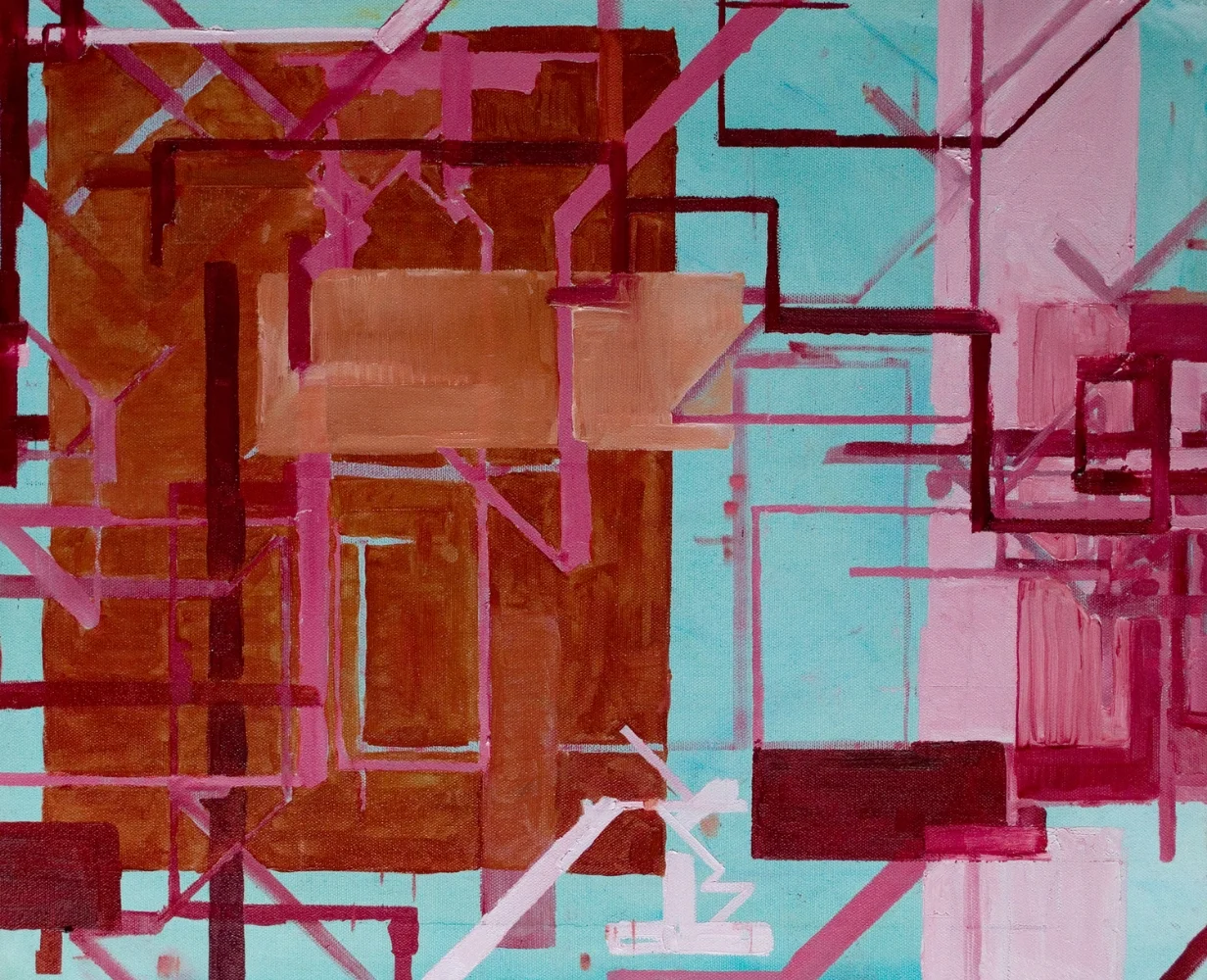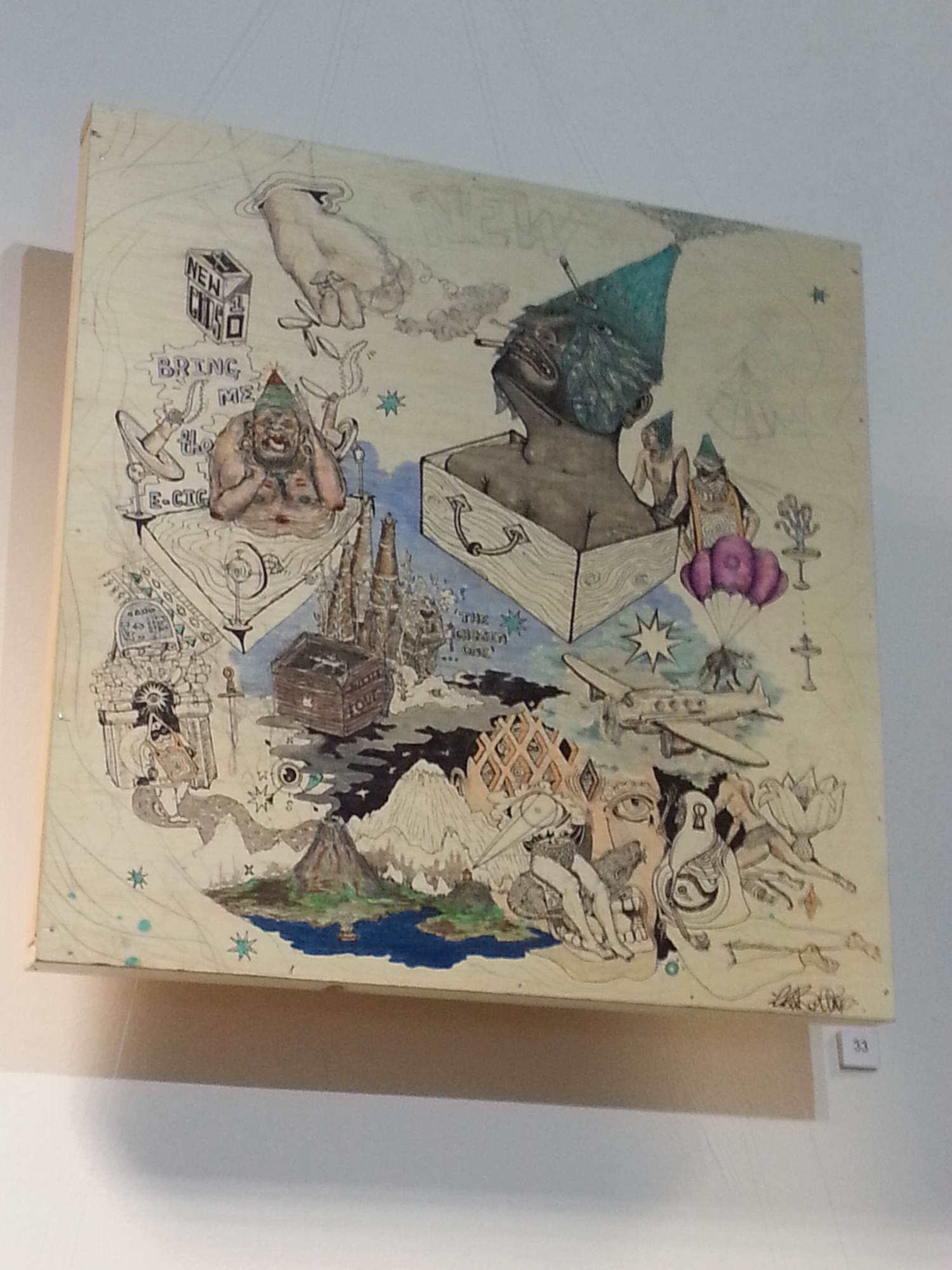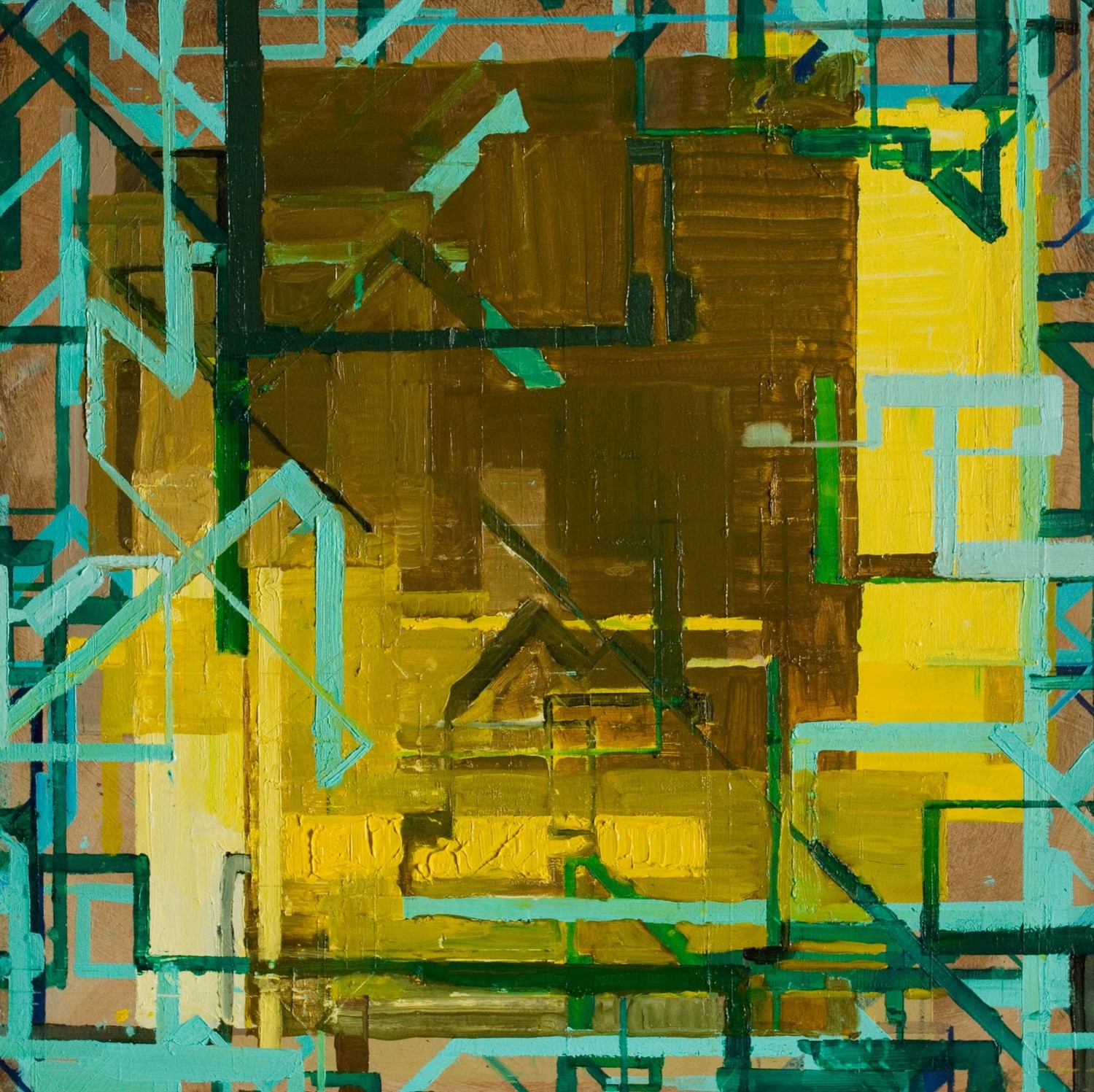Firstly I'm really late with this, at least I feel I am. With that out of the way on to business.
I was taken aback, shocked and honoured to be asked by Dawn Diamantopoulos, to take part in a blog hop. It's one of the best compliments to find out artists whose work you admire, think the same of your work.
As part of the blog hop I will introduce you to two other artists, who will continue the blog hop.
How does my creative process work?
One of the issues revolving around my work, is time. Time being a limited resource for me, means, that I can't afford to not work. So when I get blocked I paint through it and produce ALOT of chaff.
I've only recently made the commitment to work at my art full time and I'm still getting to know my creative process. When I'm painting in my 'Cave of Paint' as I have dubbed it, I produce work that is either intuitive or is randomly generated.
My current method of working focuses on a generative approach to creating art. Generative art means , for me at least, that a series of randomly calculated variables are placed within an algorithm, which is then executed. My Procedural Paintings use this process. Most generative art is completed digitally, I like the perverse idea of working in a more analogue fashion. For my work I create algorithms that allow for a lot of randomness. If there is an artistic choice that can be made, such as the opacity of the paint or thickness of line, I turn it into a variable.
I get into the details below which you can read or skip as you feel. I think I've made it fairly clear. I really need to do a video or something.
Procedural Paintings the ‘pseudo code.’
Before we start on this please remember all of the random variables are calculated by rolling dice.
This is an example of the ‘code’ I have used for my paintings in version 2.0. Each version has a different set of coding rules. I have stripped back some of the complexity of the ‘code ’ because the first draft was horrible to look at and just unreadable.
The first thing is to decide how many paintings will be in the series version. For that I roll 1d6 ( I roll 1, 6 sided dice) and consult table 1. Then I roll the dice that has been chosen. That will decide the number of painting s in the series.
For V2.0 I decided to use coloured grounds on each of the canvases. So for each canvas I rolled 1d8 and went to table 2.
Each painting consists of Layers, Stages and Steps. The Steps have 3 sections to them:
Direction -which can be either 4 points of movement or 8 (see table3)
Length – which is calculated using table 1 and rolling the specified dice for the value.
Thickness of brush stroke – see table 4 details of each brush stroke, its length, direction and thickness.
The stages are either linked together or separated based on an odds evens roll. Each new start point for a stage is a random point on the border of the painting. At each new start point of a stage the opacity and tonal values of the paint is randomised.
When all the stages in a layer have been completed. A random number of rectangles, the size , opacity and tonal values of which have been randomised.
The next layer and its stages and steps are painted over this, and so on until the last step has been followed.
Over the course of a painting mistakes will happen, I might misread a line and paint a step right 5cms instead of left. If this happens I follow the steps to the end of the stage for both the mistake and the correct series directions. The mistake is dry-brushed to highlight it as different.
I hope that is manages to clear up some of the process. If you need more clarification then please ask away.
(edit- I added the image below and the tables lost their format, so I took a screen shot instead.)
The image below has the tables referred to in the text.
These are a few of the tables I use. My current iteration of the work has gone ballistic with tables.
Procedural Painting V2.0.3, 22" x 18", Oil on canvas. 2014
How does my work differ from others of its genre?
I am trying to marry the digital world of algorithmic, generative art and glitches with the world of painting. Usually that would mean working in the digital realm, but my perverse nature and love affair with paint, means I'm doing the reverse and dragging the digital world into the plastic. In away the process by which I work turns me into a machine, whose only function is to paint the lines as instructed.
What's on my easel right now?
I've currently got about 5 paintings on the go, with countless others stacking up in my head. I swear if I could paint 24 hours a day for a year I'd still have too many paintings left to do. I've been focused mainly on the two paintings here.
Of the other paintings I'm working on this is the most interesting. It is born of frustration and the impossible prisons of Piranesi.
Piranesi's frustrated pier. 80cm x 60cm, oil on canvas (WIP)
The first artist I'd like to introduce is Joshua Black. I find his use of typography really interesting, it's just the right amount of playful inventiveness and darkness for me. He uses -to my uninformed eyes at least- minimalism effectively. Just the right amount of detail to create a visually interesting space for your eye. His work also allows room for thought. He doesn't dictate how you think about and around his work.
The images below are from his 'Six word stories' series.
The second artist is Benny Sweeny, an artist from my home town Omagh. His work is mostly mixed media, using paper and acrylic paint among other materials. The work is a tumult of pattern, colour and shape, all of it competing for your attention. Yet at the same time it seem to have reached an equilibrium where the tensions are tenuously balanced. The work I've chosen to show is from his Concordia Series.















